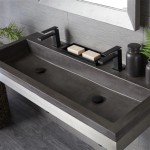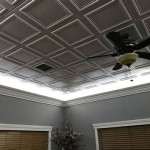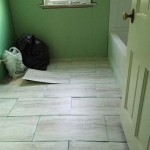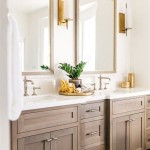What is Popular in Bathroom Vanities?
Bathroom vanities are a focal point in bathroom design, serving both functional and aesthetic purposes. Trends in bathroom vanities are constantly evolving, influenced by factors such as changing architectural styles, technological advancements, and shifting consumer preferences. Understanding current trends is crucial for homeowners, designers, and contractors seeking to create modern and stylish bathrooms.
This article provides an overview of popular features and styles currently dominating the bathroom vanity market. It will explore the most sought-after materials, design elements, and technological integrations that are shaping the contemporary bathroom experience.
Floating Vanities: Space and Style
One of the most prominent trends in bathroom vanity design is the increasing popularity of floating vanities, also known as wall-mounted vanities. These vanities are installed directly onto the wall, leaving a visible space underneath. This design choice offers several advantages.
Firstly, floating vanities create the illusion of a larger space. By freeing up floor space, they contribute to a more open and airy feel within the bathroom. This is particularly beneficial in smaller bathrooms where maximizing the perception of space is crucial.
Secondly, they offer enhanced cleaning convenience. The open space beneath the vanity allows for easy access for cleaning floors, reducing the accumulation of dust and debris. This is a significant practical benefit that appeals to many homeowners.
Thirdly, floating vanities provide a modern and minimalist aesthetic. Their clean lines and uncluttered appearance contribute to a contemporary bathroom design. They are often incorporated into minimalist and Scandinavian-inspired bathroom schemes, emphasizing simplicity and functionality.
Floating vanities are available in a variety of materials and finishes, allowing for customization to suit different design preferences. Options range from natural wood finishes to sleek, painted surfaces. The hardware used in conjunction with floating vanities, such as drawer pulls and faucet designs, also plays a critical role in achieving the desired aesthetic. These hardware choices often lean towards minimalist and geometric forms, complementing the overall design.
Installation of floating vanities requires careful planning and attention to structural support. It is important to ensure that the chosen wall can adequately support the weight of the vanity, especially when it includes heavy countertops or sinks. Professional installation is often recommended to ensure proper mounting and stability.
Natural Materials and Sustainable Choices
The demand for natural materials and sustainable options is a significant trend across all areas of home design, and bathroom vanities are no exception. Homeowners are increasingly seeking eco-friendly and responsibly sourced materials for their bathroom renovations.
Solid wood vanities, particularly those made from reclaimed wood or sustainably harvested timber, are highly popular. Wood brings warmth and texture to the bathroom, creating a more inviting and natural atmosphere. The unique grain patterns and natural variations in wood add character and visual interest to the vanity.
Stone countertops, such as granite, marble, and quartz, are also widely used. These materials are durable, water-resistant, and available in a range of colors and patterns. Quartz, in particular, is a popular choice due to its durability and low maintenance requirements. It is also available in a wide array of colors, including options that mimic the look of natural stone.
Beyond the materials themselves, the manufacturing processes used to create bathroom vanities are also under scrutiny. Manufacturers are increasingly adopting sustainable practices, such as using water-based finishes and minimizing waste during production. Certifications such as FSC (Forest Stewardship Council) and LEED (Leadership in Energy and Environmental Design) are becoming increasingly important to consumers who prioritize sustainability.
The focus on natural materials and sustainable choices extends beyond the vanity itself to include the hardware and accessories used in the bathroom. Faucets and showerheads that are WaterSense certified, which meet EPA criteria for water efficiency and performance, are increasingly sought after. Similarly, LED lighting is becoming the standard for bathroom lighting due to its energy efficiency and long lifespan.
Incorporating plants into the bathroom design is another way to enhance the connection to nature. Plants can add a touch of greenery and freshness to the space, further contributing to a calming and relaxing atmosphere. Suitable plants for the bathroom include those that thrive in humid environments, such as ferns, orchids, and snake plants.
Smart Technology Integration
The integration of smart technology is transforming the way people interact with their bathrooms. Bathroom vanities are becoming increasingly equipped with features that enhance convenience, comfort, and efficiency.
Touchless faucets are gaining popularity due to their hygienic benefits and water-saving capabilities. These faucets use sensors to detect hand movements, automatically turning on and off the water flow. This reduces the spread of germs and helps to conserve water by preventing unnecessary water usage.
Smart mirrors are another technological integration that is becoming increasingly common. These mirrors can display information such as weather forecasts, news headlines, and calendar appointments. Some smart mirrors also include built-in lighting, Bluetooth connectivity, and voice control capabilities.
Integrated lighting systems are also becoming more sophisticated. Many vanities now include dimmable LED lighting that can be adjusted to create different moods and atmospheres. Some lighting systems can even be controlled remotely via smartphone apps.
In-drawer outlets and USB ports are another popular feature. These allow users to conveniently charge electronic devices such as smartphones, tablets, and electric toothbrushes without cluttering the countertop with cords.
Some advanced vanities even incorporate features such as heated drawers for warming towels and built-in speakers for playing music. These features cater to those seeking a luxurious and spa-like bathroom experience.
The growing adoption of smart technology in bathroom vanities reflects a broader trend towards creating more connected and automated homes. As technology continues to evolve, it is likely that even more innovative features will be integrated into bathroom vanities in the future.
Color Trends: From Neutrals to Bold Statements
Color plays a significant role in defining the aesthetic of a bathroom, and the color choices for vanities are reflecting current trends. While neutral colors remain popular for their versatility and timeless appeal, bolder and more expressive colors are also gaining traction.
White remains a classic and enduring choice for bathroom vanities. It creates a clean, bright, and airy feel, making it ideal for smaller bathrooms or those seeking a minimalist aesthetic. White is also a versatile backdrop that complements a wide range of accent colors and design styles.
Gray is another popular neutral color for bathroom vanities. It offers a sophisticated and modern alternative to white, with a range of shades from light grays to deeper charcoal tones. Gray pairs well with both warm and cool accents, making it a versatile choice for various bathroom schemes.
Wood tones, ranging from light oak to rich walnut, continue to be a popular choice for adding warmth and natural character to the bathroom. Wood finishes can be paired with a variety of countertop materials and hardware styles to create different looks.
In recent years, bolder colors have begun to make their way into bathroom vanity design. Navy blue, emerald green, and deep burgundy are becoming increasingly popular choices for those seeking to make a statement. These colors can add a touch of drama and personality to the bathroom.
Pastel colors, such as light pink, mint green, and powder blue, are also gaining popularity, particularly in more feminine or vintage-inspired bathrooms. These colors can create a soft and calming atmosphere.
The choice of color for a bathroom vanity should be carefully considered in relation to the overall design scheme of the bathroom. It is important to select a color that complements the other elements in the space, such as the tile, flooring, and fixtures.
Storage Solutions: Maximizing Space and Organization
Effective storage is essential in any bathroom, and bathroom vanities play a crucial role in providing organized storage solutions. Contemporary vanity designs are incorporating innovative storage features to maximize space and improve functionality.
Drawers are a key component of modern bathroom vanities. They provide easy access to stored items and help to keep the countertop clutter-free. Drawers can be customized with dividers, organizers, and soft-close mechanisms to enhance functionality.
Pull-out shelves and organizers are another popular storage solution. These can be used to store items such as toiletries, towels, and cleaning supplies. Pull-out features make it easier to access items stored at the back of the cabinet.
Open shelving is also becoming increasingly popular, particularly in minimalist and contemporary bathrooms. Open shelves provide a visual display of items and can be used to showcase decorative accessories or frequently used items.
Integrated hampers are a convenient addition to bathroom vanities. These provide a designated space for dirty laundry, helping to keep the bathroom tidy.
Medicine cabinets are a classic storage solution that is still widely used in bathrooms. Modern medicine cabinets often incorporate features such as adjustable shelves, built-in lighting, and even integrated power outlets.
The design of the storage solutions in a bathroom vanity should be carefully considered to meet the specific needs of the user. It is important to consider the types of items that will be stored and the frequency with which they will be accessed.
In conclusion, the current trends in bathroom vanities reflect a focus on style, functionality, and sustainability. From floating vanities to smart technology integrations, homeowners have a wide range of options to choose from when designing their dream bathrooms.

Today S Most Popular Options In Modern Bathroom Vanities

35 Best Bathroom Vanities 2024

35 Best Bathroom Vanities 2024

6 Modern Bathroom Vanity Design Ideas Lily Ann Cabinets

15 Of The Most Popular Bathroom Vanity Ideas For 2024 Badeloft

10 Bathroom Vanity Features Pros Always Recommend

Beautiful Bathroom Vanity Ideas Forbes Home

Bathroom Vanity Styles To Fit Your Space Forbes Home

8 Most Popular Bathroom Vanities With Sink 30 Inches For 2024 The Jerum Post

Today S Most Popular Options In Modern Bathroom Vanities
Related Posts







